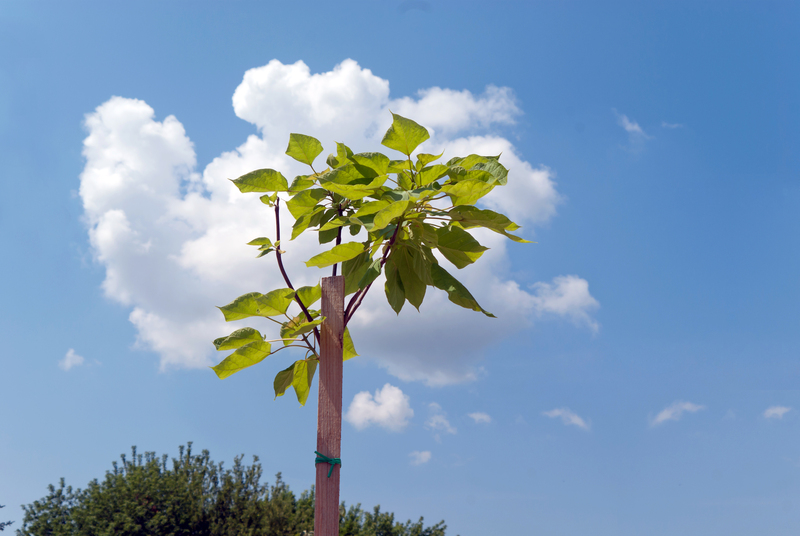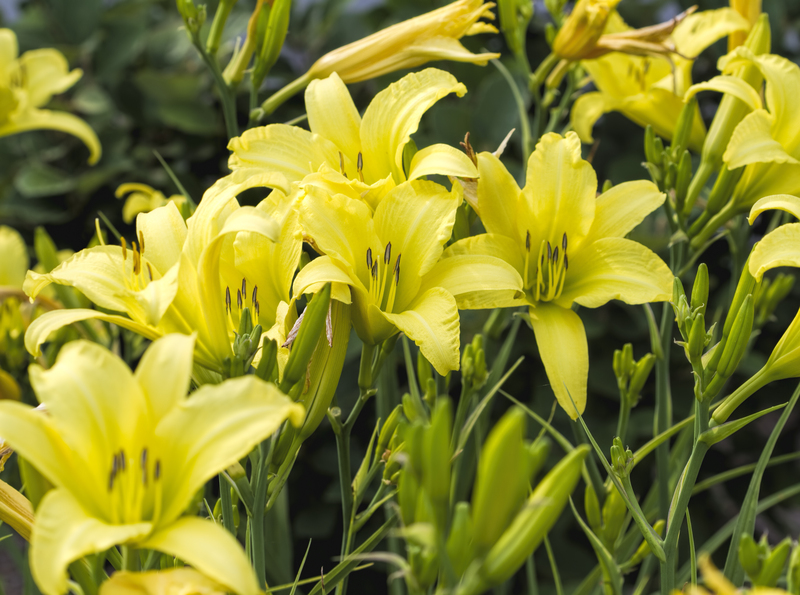How to Maintain a Lush Lawn During the Driest Summer Months
When temperatures soar and rain becomes scarce, homeowners often struggle to keep their lawns green and healthy. But with the right techniques, it is possible to maintain a lush, vibrant lawn even during the driest summer months. This comprehensive guide covers top strategies for lawn maintenance during drought, including watering methods, prevention tips, and lawn care practices that ensure your grass survives and thrives through the heat.
Understanding Summer Drought: The Impact on Your Lawn
The hottest months of the year can take a major toll on your grass. Extended periods of high temperatures and low precipitation deplete soil moisture, causing lawns to lose their vibrant color and resilience. Understanding how drought affects grass physiology is essential to develop an effective lawn care routine tailored specifically for dry summer months.
- Loss of turgor: Grass blades wilt and turn brown when deprived of water.
- Root shrinkage: Drought forces roots to retreat, making grass more vulnerable to stress and pests.
- Soil compaction: Dry soils can become hard, limiting nutrient uptake and growth.
- Increased weed invasion: Weeds thrive where grass is weak and thin.
Recognizing these challenges is the first step in maintaining a lush lawn during summer drought.

Best Watering Techniques for a Lush Summer Lawn
Smart Irrigation Timing
Watering at the right time is crucial when resources are limited. The best practice is to irrigate early in the morning, ideally between 4-9 a.m. Cooler temperatures and lower wind velocity mean less evaporation, allowing more water to reach deep roots where it is needed most.
- Morning irrigation: Minimizes evaporation loss.
- Night watering: Can encourage fungal disease due to prolonged moisture on leaves.
- Midday watering: Results in rapid evaporation.
Deep and Infrequent Watering
Deep soakings encourage grass roots to grow deeper, helping your lawn find moisture farther beneath the soil's surface -- a vital trait during droughts. Rather than shallow watering every day, water once or twice per week for longer periods, applying approximately 1 to 1.5 inches of water at a time.
Pro tip: Use a rain gauge to measure how much water your sprinkler system delivers in a given time.
Efficient Irrigation Methods
Sprinkler choice significantly impacts your lawn's hydration. Drip irrigation systems and soaker hoses can be more efficient for targeted watering, minimizing runoff and evaporation. If using automated sprinklers, ensure they are regularly checked and calibrated to avoid overwatering or dry patches.
- Adjust for rainfall: Turn off automatic systems after significant rain.
- Check for leaks: Prevent water waste in pipes and fittings.
- Prioritize zones: Water high-need areas (like sunny slopes) more frequently.
Soil Health: The Foundation of Summer Lawn Survival
A healthy soil profile enables grass to withstand heat and drought stress. Regular soil testing to check pH and nutrient levels will tell you exactly what your lawn needs.
Aerate Your Lawn
Compacted soils don't absorb water well. Core aeration (removing small plugs of soil) opens passageways for water, nutrients, and air to reach the root zone. The best time to aerate is late spring or early summer before serious drought sets in.
Enhance with Organic Matter
Mixing compost or organic humus into your lawn soil improves its water-holding capacity, stimulates earthworm activity, and boosts microbial health--all of which contribute to a lush summer lawn.
- Top-dress with compost: Spread a thin layer (no more than 1/4 inch) over your grass.
- Avoid heavy sand or clay: They can worsen drainage issues or encourage compaction.
- Mulch clippings: Instead of bagging, let clippings return nutrients to the soil.
Lawn Mowing Tips for Hot, Dry Weather
Raise Your Mowing Height
Taller grass shades the soil, reducing evaporation and keeping the root zone cooler. Set your mower blades between 3-4 inches for most cool-season grasses, or 2-3 inches for warm-season types. Never remove more than one-third of the total grass height in a single mowing.
Keep Mower Blades Sharp
Dull blades tear grass, leaving ragged edges that lose water faster and are more susceptible to disease. Sharpen mower blades regularly to ensure a clean cut that helps your lawn retain moisture.
Mow Less Frequently
During periods of severe summer drought, reduce mowing frequency to avoid stressing the grass further. Only mow when necessary, and avoid mowing during the hottest part of the day.
Choosing the Right Grass Types for Summer Drought
If you're struggling to maintain a vibrant lawn every year, consider overseeding with drought-tolerant grass species. The best grasses for surviving dry summers include:
- Bermudagrass: Excellent heat tolerance, deep roots.
- Zoysiagrass: Dense growth, low water needs.
- Buffalograss: Native to dry prairies, highly drought-resistant.
- Tall Fescue: Deep-rooted cool-season grass.
Consult a local nursery or cooperative extension for recommendations tailored to your specific region and climate.
Fertilizing Your Lawn During the Driest Months
Time Fertilization Wisely
Fertilizing a stressed, drought-stricken lawn can do more harm than good. Avoid heavy fertilization during peak drought; instead, fertilize in late spring or early fall when temperatures are cooler and rainfall increases.
- Use slow-release formulas: They provide consistent nutrients without burning the lawn.
- Apply organic fertilizers: They improve soil structure and water retention over time.
- Avoid synthetic fast-release fertilizers: These can damage stressed plants and lead to runoff.
Supplement Micronutrients
Ensure your lawn isn't suffering from deficiencies in essential minerals such as iron, magnesium, and potassium--especially potassium which is crucial for drought resistance.
Weed and Pest Control for a Lush Lawn in Summer
Vigilant Weed Management
Weeds steal water and nutrients from your grass, thriving in areas where your lawn is thin and dry. Stay ahead by:
- Hand-pulling: Effective for small patches in early morning when soil is damp.
- Applying mulch: Smother weeds around lawn edges and borders.
- Pre-emergent herbicides: Use with caution, as some suppress grass growth during droughts.
Pest and Disease Monitoring
Heat-stressed lawns are vulnerable to insect pests and fungal diseases. Look out for:
- Brown patch: Circular dead spots, especially in humid climates.
- Chinch bugs: Tiny insects that suck juices from grass blades, causing yellowing.
- Billbugs and Grubs: Undermining the roots, leading to sudden die-off.
Address problems promptly with appropriate treatments; always follow label instructions, and opt for integrated pest management whenever possible.
Mulching and Covering: Protecting Grass Roots from Heat
Mulch isn't just for gardens! Top-dressing your lawn with a very thin layer of fine mulch (compost, shredded leaves, or pine needles) can:
- Reduce evaporation: A barrier against direct sun and wind.
- Keep soil cooler: Moderate soil temperatures beneath grass.
- Decrease weed growth: Fewer opportunities for invaders to establish.
Just ensure it's a very light layer so your grass isn't smothered.
Practical Lawn Care Steps During Water Restrictions
Many regions impose watering limits during the driest summer periods. To keep your summer lawn healthy with reduced water:
- Prioritize core areas: Focus limited watering on showcase lawns, entryways, or high-traffic zones.
- Let fringes go dormant: Grass naturally browns and will recover with autumn rains if roots are healthy.
- Avoid fertilizing: Stimulating new growth without water can damage lawns.
- Minimize traffic: Keep pets, toys, and furniture off stressed areas to prevent further damage.
- Use graywater: When allowed, recycled household water can supplement irrigation.
Long-Term Solutions: Designing a Drought-Resilient Lawn
Sometimes, the best way to maintain a lush lawn through future droughts is by rethinking your landscape. Consider:
- Reducing lawn size: Replace turf in low-use areas with native plants, wildflowers, or groundcovers.
- Install rain gardens: Capture runoff for use by lawn or flowerbeds.
- Use permeable materials: Pavers, gravel, or mulch paths help retain water in the landscape.
- Opt for native grass blends: Blend your existing turf with grasses uniquely suited to your region's summer climate.

Frequently Asked Questions: Lush Lawns in Dry Seasons
Can I let my lawn go dormant during drought?
Yes. Most cool-season grasses will turn brown and stop growing if deprived of water but will green up once cooler, wetter weather returns. The key is to water just enough every few weeks to keep roots alive.
Is it okay to mow my lawn when it's brown or dormant?
It is best to avoid mowing a dormant lawn, as cutting stresses the grass further. Only mow if weeds are flowering or grass has grown enough to require trimming.
Should I reseed my lawn after a dry summer?
If large patches fail to recover, overseed with a drought-tolerant grass variety in autumn for faster fill-in and better future resilience.
Conclusion: Keep Your Lawn Lush All Summer Long
With thoughtful care, your lawn can withstand even the harshest summer conditions. By watering deeply and efficiently, adopting smart mowing habits, prioritizing soil health, and choosing resilient grass varieties, you'll enjoy a green, vibrant lawn during even the driest months. Remember, the key to maintaining a lush lawn during drought is proactive, consistent care--starting before the first heatwave hits.
Invest in your yard's future by following these tips each year to ensure a stunning landscape no matter how severe the summer gets!